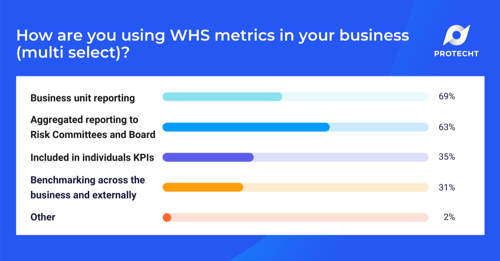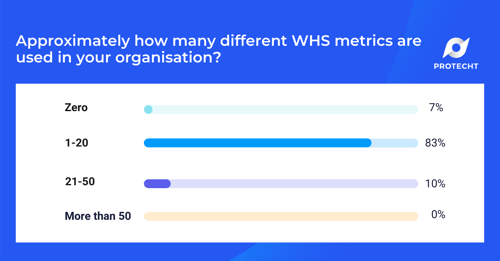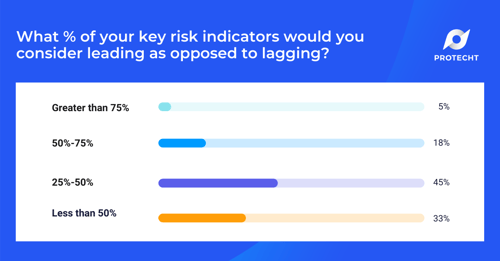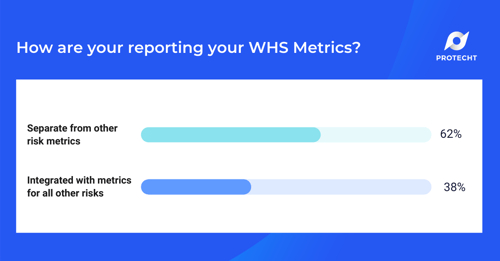In this blog, David Tattam summarised his insights of the fifth live session "Identifying, Tracking, Monitoring, and Reporting WHS Risk Metrics" in the webinar series "A Deep Dive into Workplace Health and Safety".
In our 4th webinar, we looked at Risk & Hazard Assessment. We covered:
- Review of WHS concepts
- Visualisation with Protecht.ERM
- Assessment Follow up & Action
- Assessment Reporting and the limitations of the 5 by 5 Risk Matrix
In the 5th Webinar of the series we are looking at how to identity, track, monitor, and report on WHS Risk Metrics.
What are Risk Metrics?
A WHS Risk Metric is a quantifiable measure that is used to track and assess the status of WHS related risk.
- OH&S objectives can be measured via metrics
- WHS Risk produces symptoms, red flags or
other evidence as it travels through its life,
from root cause & hazards to impact. - Controls often give off evidence which
indicates how the control is performing. - Compliance and the degree to which we are
meeting our legal and other requirements can
be tracked
Risk metrics should sit in the centre of our ERM Framework as part of our risk management processes and systems, They should be an integral part of our day-to-day processes.
What is the value of using Risk Metrics?
- To evaluate the performance of your WHS system
- Monitor and report on risks in ‘as real time mode’ as possible
- Detect problems as part of an 'early warning system'
- Practice proactive rather than reactive risk management
- To Incentivize staff with respect to risk management
- Allow bench-marking with peers to promote best practice
- Provide objective information to manage the business
in our first poll we asked 'How are you using WHS Metrics in your business?' Here are the results:

- 69% BU Reporting
- 63% Aggregated Reporting to Risk Committees and Board
- 35% Individual KPIs
- 31% Bench-marking
As you can see from the results nearly two-thirds are using aggregate reporting to the risk committee. This is really encouraging because it implies that those of you that are doing Business Unit reporting are also aggregating that up to risk committees and board levels.
Types & Characteristics of WHS Risk Metrics
Key Risk Indicator (KRI)
Key Control Indicator (KCI)
Key Performance Indicator (KPI)
Key Compliance Indicator
In the webinar, we discussed the types and characteristics of WHS Metrics and linked back to how they can be used as evidence on fulfilling ISO 45001 requirements.
I was interested to know how many WHS Metrics were being tracked in the webinar participants workplaces, I asked 'Approximately how many different WHS metrics are used in your organisation?' Here are the results:

- 7% of participants are tracking Zero WHS Metrics
- 83% of participants are tracking 1-20 WHS Metrics
- 10% of participants are tracking 21-50 WHS Metrics
We discussed how it is ideal to be able to fit all of your metrics on a one-page dashboard.
Identifying a strong suite of WHS Metrics
We discussed what makes a strong indicator. At Protecht we recommend using Peter Drucker's SMART Methodology. We covered methods to identify metrics, examples of WHS Risk Metrics and features of good metrics:
- Balance of Leading vs. Lagging indicators
- Strong correlation between indicator and the Risk / Control
- Information: Easy to collect, Reliable, Timely
In our 2nd Poll I ask participants 'What % of your key risk indicators would you consider leading as opposed to lagging?' Here are the results:

- 5% of participants said greater than 75%
- 18% of participants said 50-75%
- 45% of participants said 25-50%
- 33% of participants less than 50%
These results are encouraging, in Risk Management we are increasingly seeing more proactive Risk Management.
Collecting, Scaling, Reporting & Using WHS Risk Metrics
We discussed what data sources our metrics are coming from, how frequently we are collecting this data (in WHS real-time data can be crucial). How quickly is our information is available, are we using any automation? We also discussed the importance of Central Risk Metric Libraries, Scaling, and how we can turn this data into intelligence and report on it.
In the final poll, I was interested to know how webinar participants are currently reporting on their WHS Metrics. Here are the results:

- 62% of participants are reporting on WHS Metrics separately from other risk metrics
- 38% of participants are integrating
Protecht's view is the more that you can integrate metrics with other risks, the more powerful and dynamic your reporting.
We touched on Protecht.ERM Analytics and Reporting and looked at some examples of dynamic and integrated reports.
This will be covered in more detail in our next webinar, where I will be joined by my Protecht colleague Adel Fakhreddine, Head of Sales for APAC when we explore the Visualisation of WHS Concepts in Protecht.ERM and continue the deep dive into WHS.
To access the recording of the previous webinars and to save your spot for the upcoming webinars click the image below

